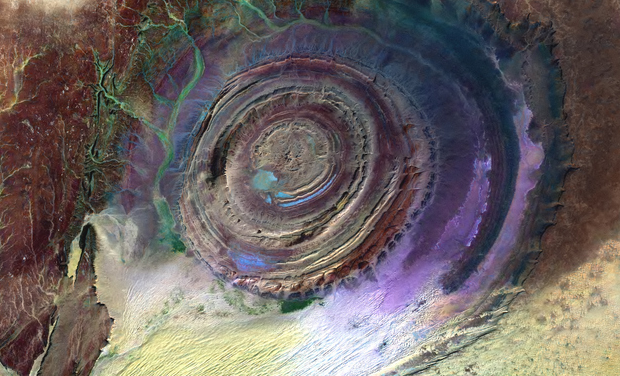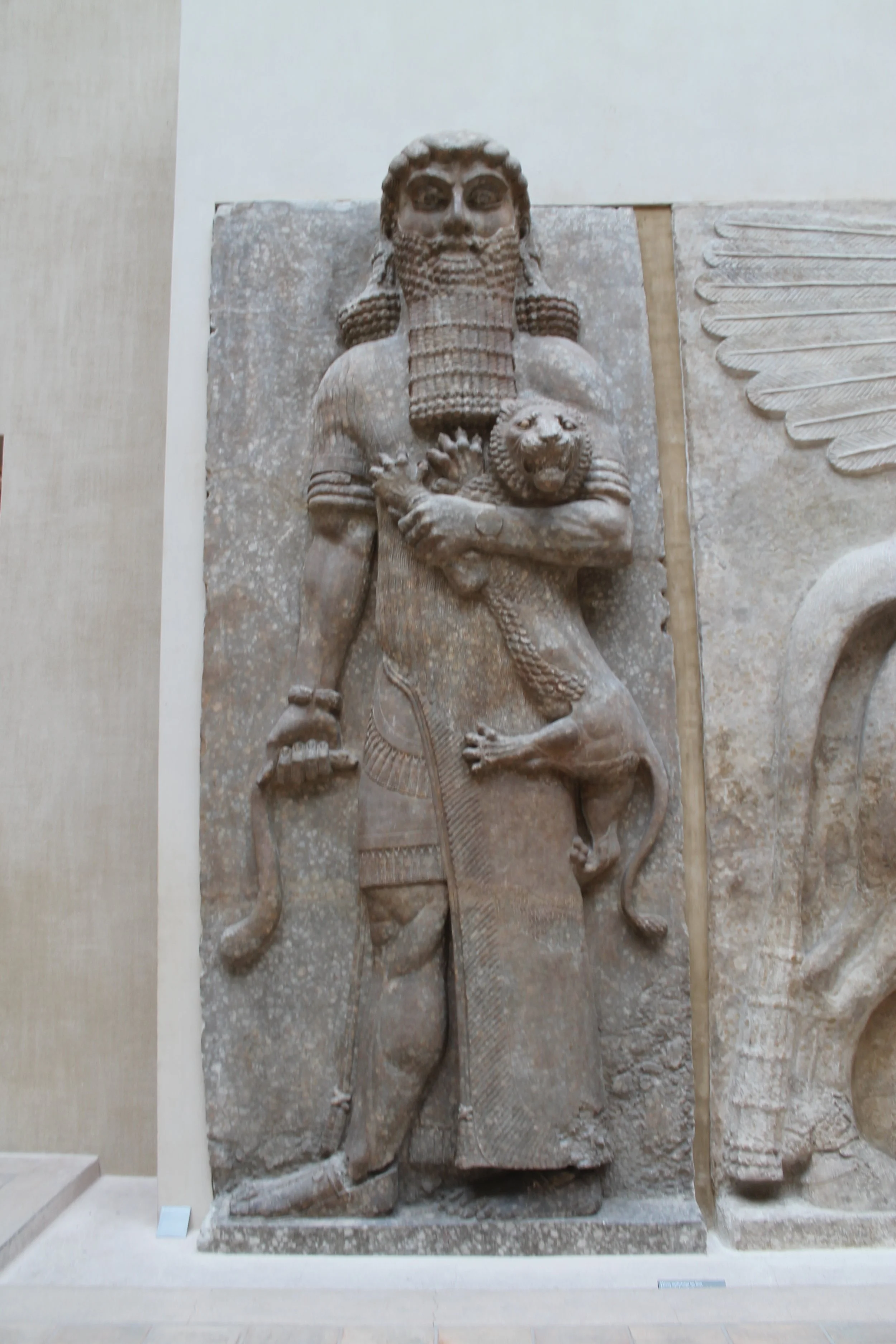The Minoan Civilization and the Richat Structure
In recent years, a very strange looking structure has received attention as being a possible location for the mythical City of the Atlantean Empire; a civilization discussed by Plato in his great works Timaeus and Critias, and also recorded within the Egyptian mythology of Horus recorded at the Temple of Edfu in Egypt. We are referring to the Richat Structure, also known as the Eye of Africa. This idea has been particularly promoted by the Content creator Jimmy Corsetti.
We won’t go through the various lines of evidence in this article and readers should seek out the podcast Bright Insight for good coverage of this subject. Although we will summarise that the structure bares striking similarities to the claimed City of Atlantis as described by Plato. This includes the vicinity to the Pillars of Hercules at the Straights of Gibraltar, having a watery entrance for ships to sail straight up to the City, a ring structure with intermediate regions of land and water and the proximity to the Atlas mountains in the North. It was said to be surrounded by great fertile plains.
It is unknown how the Richat structure was formed, but it is believed to be a result of some volcanic process. Yet we should also acknowledge that it is unique in that there are no other structures like it present on the Earth. It is approximately 40 kilometres in diameter which is around 25 miles. For the ring structure, it was said that there were three rings of water and two rings of land that surrounded the city centre. This then connected to a canal which connected to the Sea.
In the account by Plato, approximately 9,000 years ago there was a great war that took place after the Atlanteans had conquered parts of Libya and Egypt but were eventually defeated by the defending Athenians - residents of ancient Athens in Greece. If the Atlanteans ever existed, they were certainly a Naval power, and this gave them the flexibility to move up and down the Mediterranean at ease for the purpose of trade or war.
The problem is, there is very little surviving evidence to support the existence of Atlantis, and this presents an issue for historians. Since their existence may have been so long ago, it is very difficult to find that evidence, and if it does exist it is likely underneath the Sea consistent with the ocean levels for what they were during their existence. However, might we search for evidence of their existence by an examination of other cultures that emerged in this region and in particular any unusual artefacts they may hold?
Are there other ancient Naval cultures we might turn to in our search for a connection? There is, and one of those is the Minoan civilization centred around the island of Crete which is around 3,260 square miles in area, and historians credit them with the first civilization in Europe. It is believed their society existed in the periods 3100 BC to 1100 BC. Since their base of operations was around a large island, to conduct trade with other cultures they would had to be a sea fairing society.
Not a lot is known about their cultural beliefs and societal organisation. They were known to have two writing systems called Cretan Hieroglyphs and Linear A, neither of which has been fully deciphered. They did not call themselves Minoan, and that was a later term phrased by an archaeologist in reference to King Minos, a ruler of Knossos, which is one of the sites that still exists in Crete with its famous Palace of Minos. In addition to the Island of Crete, the Minoan civilization had settlements around a group of islands in the Aegean Sea. These are all locations of critical trade routes for sailing vessels to Africa, the Middle East and Europe.
It is also interesting because the oldest evidence for anatomically modern human habitation in Crete dates to 10,000 - 12,000 years before present, which lines up with the Younger-Dryas catastrophe (12,900 - 11,700 years before present) and so is at least suggestive of a connection. In other words, is it possible that the people who founded the Minoan civilization, were the survivors of an ancestry that went back to an earlier time when the climate went through an abrupt change. There is also a DNA haplogroup connection of people today in Crete to a group from Anatolia (modern day Turkey) - which is also the location of the Gobekli Tepi site.
An aspect of the Minoan culture that is interesting is their ceramics, with beautiful patterns of triangles and spirals. The artefact below is one such example that this author stumbled across known as Philistine Bichrome Pottery and there are suggestions this type of design may have had connection to the Minoan culture, and also the Mycenaean. This particular piece was believed to have been manufactured in ancient Canaan, a region of the Southern Levant in the Ancient Near East which encompasses Egypt, Iran, Anatolia, Armenia, the Levant and the Arabian Peninsula. This piece, possibly dates to around the 12 Century BCE.
Philistine Bichrome Pottery
The reason this piece attracted my attention, was because of the unique circular design on the surface. In particular, the design is not a set of concentric circles, but instead they are offset with an asymmetry about the centre. One is forced to speculate, that in this design, are we seeing a pattern that preserves the geography of a once special place. In particular it has an interesting similarity to the Richat structure, as shown below when compared with a geographic image.
Comparison of Richat structure with Minoan Pottery design
For any comparison between the pottery and the geographic site of the Richat structure (as a claimed City of Atlantis) to be feasible there are several features that must be present in both. The first is a central offset region to represent a city centre, and this is present in both, although more prominent in the pottery. The second is the requirement from Plato that there would be three rings of water and two rings of land. This certainly appears present in the Richat structure, and although there are four rings in the pottery, it is perhaps not so clear what they might represent. But if such a city did exist, and the memory of it was passed down over time, could perhaps it have been preserved in the legacy of the Minoan pottery and other cultures?
This is all speculation, especially since the evidence for the City of Atlantis is not strong in the first place. Yet, other than conducting extensive underwater expeditions to retrieve artifacts and study monuments, perhaps the only way we might build a case for its existence is to find links with the other civilizations that sprang up after it. As a Sea fairing culture, with a history of having the people first appear in the Mediterranean at a time that coincides with a major catastrophe such as the Younger-Dryas, the above is at least food for thought. The Minoan and Mycenaean civilizations are certainly candidates for where such a link may be found.







